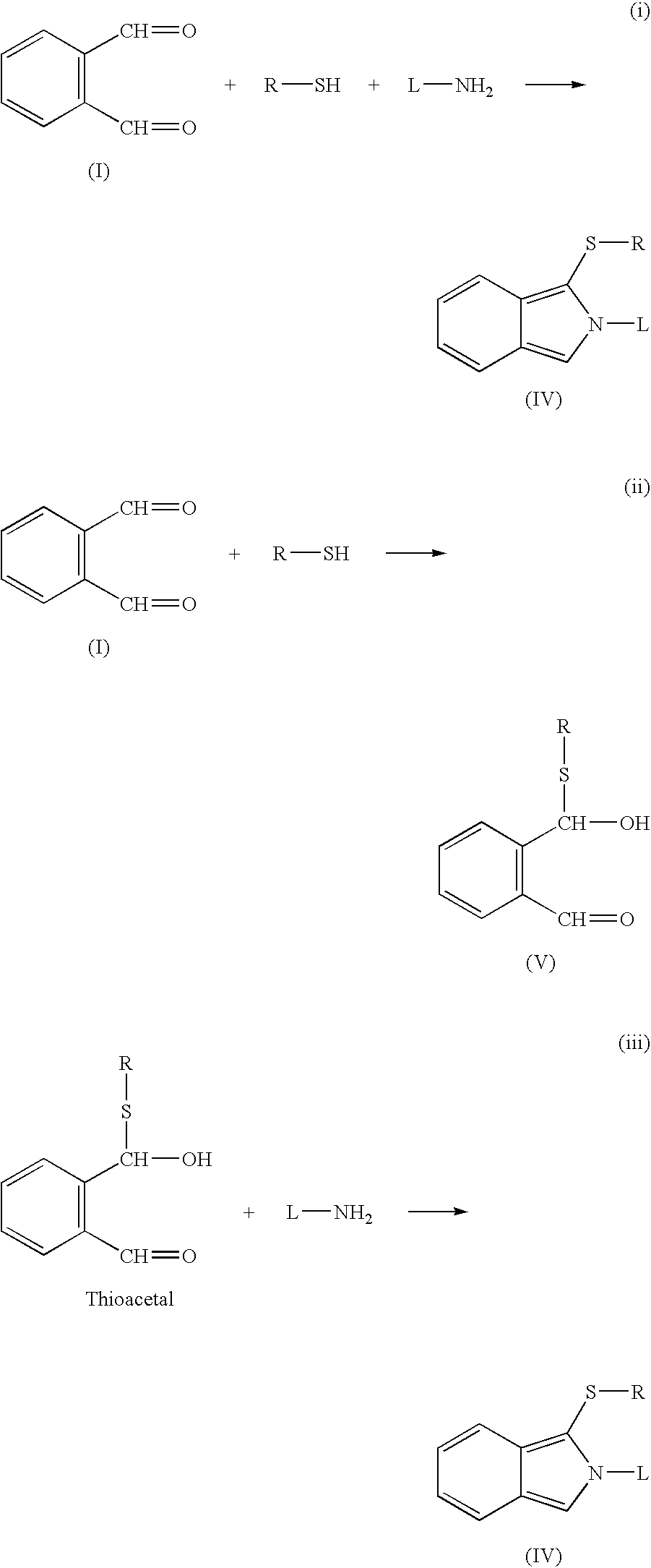Polymer for binding amine containing ligands and uses thereof
a technology of ligands and polymers, which is applied in the field of polymers for binding amines and ligands, can solve the problems of multi-step process, high overhead cost of mass-manufacture of sensor devices, and inability to readily be commercialised, so as to reduce the occurrence of cross-linking
- Summary
- Abstract
- Description
- Claims
- Application Information
AI Technical Summary
Benefits of technology
Problems solved by technology
Method used
Image
Examples
Embodiment Construction
FIG. 1 shows some examples of reaction types that may be used in the invention.
Reaction (i) shows the interaction of o-phthaldialdehyde ("OPA"), (I) with a polymerisable thiol R--SH and an amine ligand L--NH.sub.2 to produce a fluorescent isoindole (IV). Reactions (ii) and (iii) show this process carried out in sequential stages: reaction of OPA (I) with the thiol to form a thioacetal (V), which subsequently reacts with the amine ligand.
The preparation of a polymer embodying the invention and some experiments carried out with it will now be described.
1. Preparation of the Polymer
134 mg of OPA and 82 mg of allyl mercaptan (AM) were dissolved in 2 ml of (2-hydroxyethyl)methacrylate and 2 ml of acetonitrile. 50 mg AIBIN was used as a catalyst for this reaction. Reaction mixture was incubated overnight at 80.degree.. Polymer (OPA-AM) was dissolved in ethanol and 0.1 M sodium phosphate buffer pH 8.0 was added. The resulting pellet was collected and washed with water using glass filter.
2....
PUM
 Login to View More
Login to View More Abstract
Description
Claims
Application Information
 Login to View More
Login to View More - R&D
- Intellectual Property
- Life Sciences
- Materials
- Tech Scout
- Unparalleled Data Quality
- Higher Quality Content
- 60% Fewer Hallucinations
Browse by: Latest US Patents, China's latest patents, Technical Efficacy Thesaurus, Application Domain, Technology Topic, Popular Technical Reports.
© 2025 PatSnap. All rights reserved.Legal|Privacy policy|Modern Slavery Act Transparency Statement|Sitemap|About US| Contact US: help@patsnap.com



